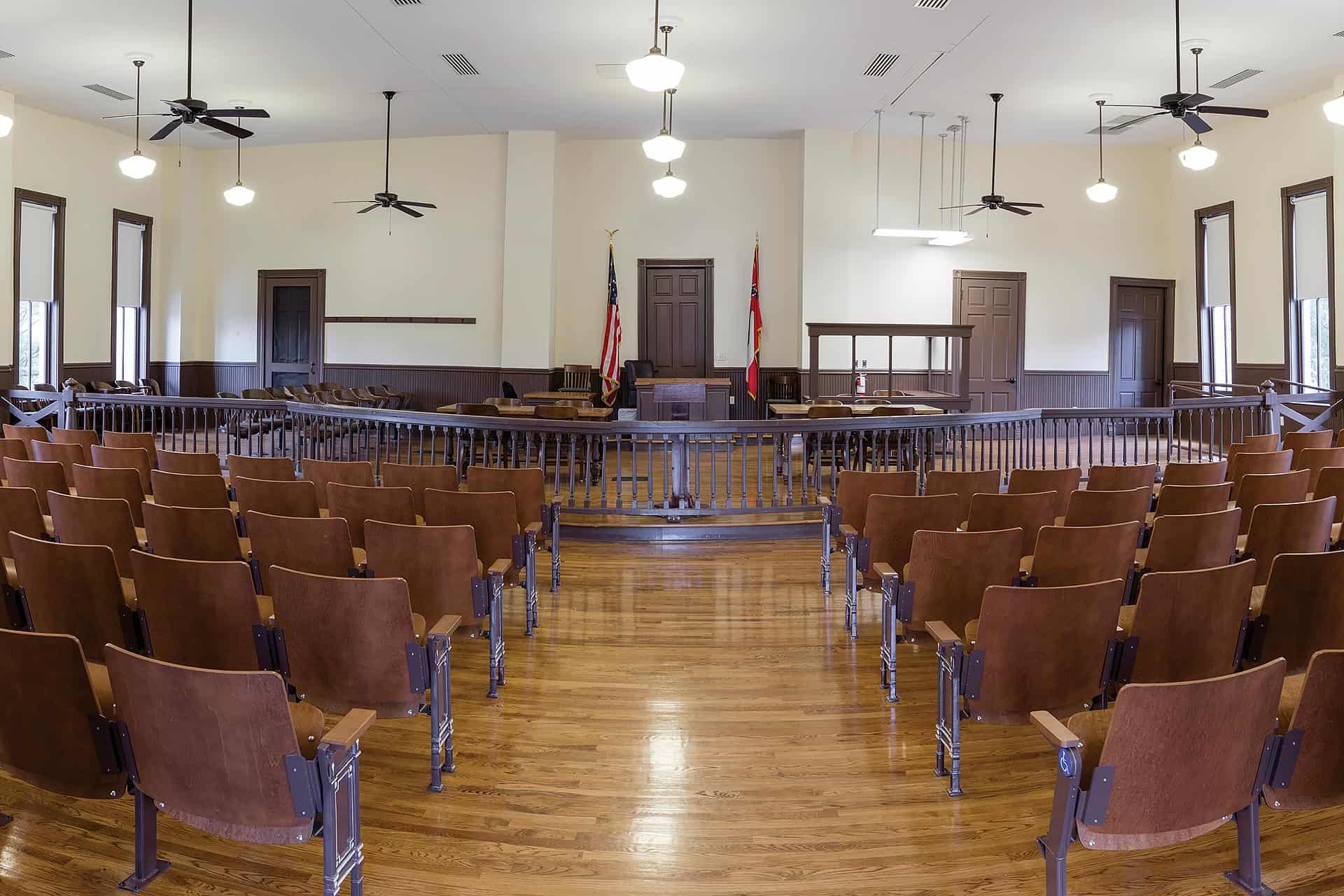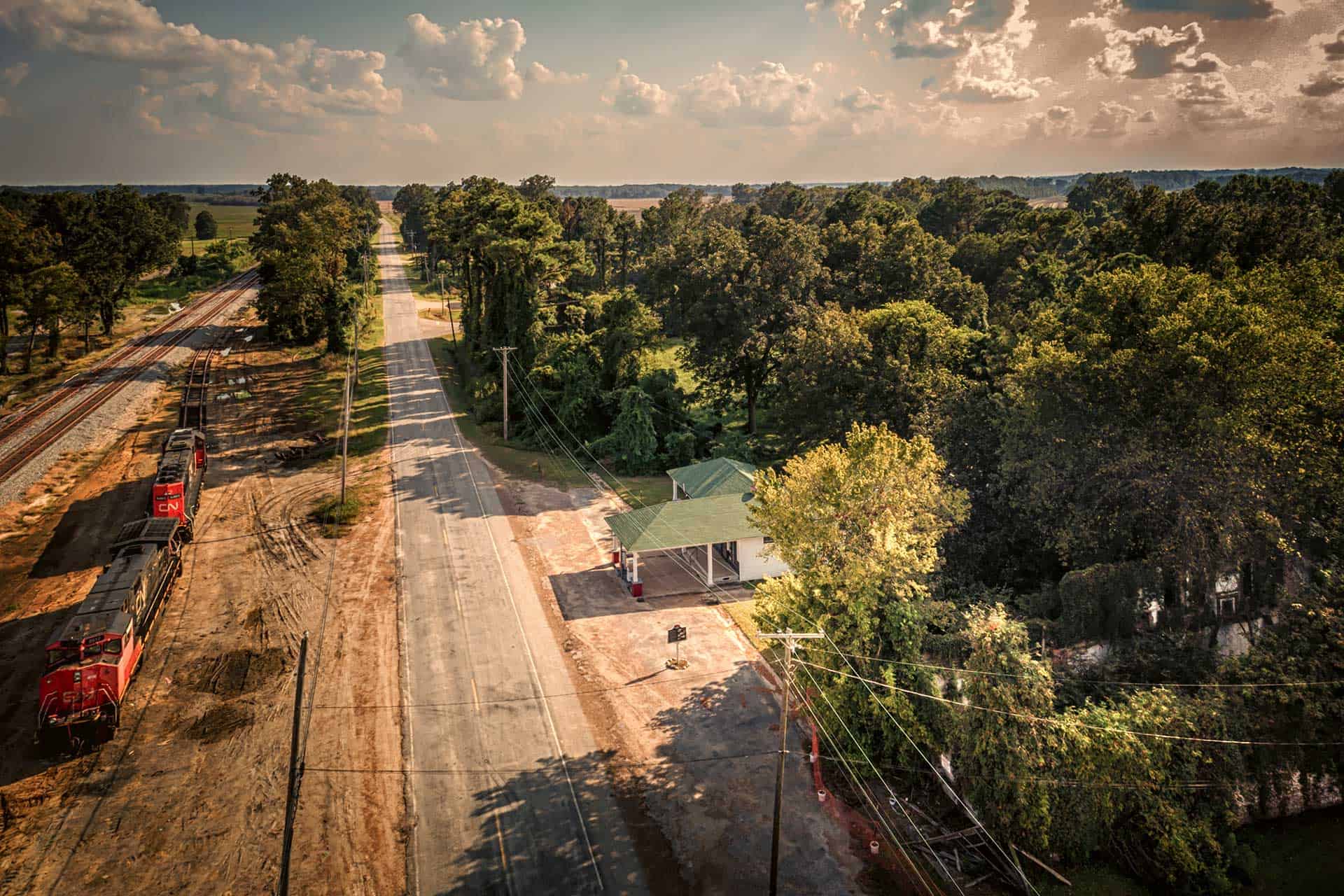The Incident
In August 1955, 14-year-old Emmett Till was visiting family in Money when he and his cousin Curtis Jones went to Bryant’s Grocery and Meat Market with some local boys to buy candy. Accounts of what happened next are still disputed, but some versions claim that Till whistled at 21-year-old Carolyn Bryant, who owned the store with her husband, Roy Bryant, 24. Carolyn Bryant later testified that Till grabbed her hand and asked for a date. In 2008, however, historian Timothy Tyson said that Carolyn admitted to him that her testimony regarding Till’s verbal and physical advances was false. Till’s cousin Simeon Wright, as well as a second anonymous source, claimed that while Till spoke to Carolyn, he did not make any inappropriate comments, and he paid for his items and promptly left the store.
When Till and the other boys exited the store, Carolyn retrieved a pistol from her car. Though the teenagers left the premises upon seeing this, word of the incident spread quickly, and Roy Bryant soon caught wind of what happened. Immediately seeking revenge, he questioned several young Black men who came to his store. After Bryant learned where Till was staying, he was overheard talking to John William “J.W.” Milam, his half-brother, about abducting Till.
Abduction and Murder
Roy, Carolyn and Milam took Till from his great-uncle’s home in the early morning hours of August 28, 1955, and tied him up in the back of a pickup truck. After dropping off Carolyn and picking up two Black men who worked for Roy, the men took Till to a barn in Drew, Mississippi, where they badly beat him. Till was also shot before the men threw his body into the Tallahatchie River, weighed down with a large fan blade they’d stolen from a cotton gin.
Three days later, two boys fishing in the river discovered Till’s nude and badly disfigured body. Till had been shot above his right ear, and his face had been beaten beyond recognition. The fan blade was secured around Till’s neck with barbed wire.
Till’s murder attracted national attention. The NAACP called the murder a lynching, and Mississippi Gov. Hugh L. White promised the organization’s national office a full investigation. Emmett’s mother, Mamie Till Bradley, had his body sent back to Chicago and demanded an open-casket funeral so that attendees could see her son’s mutilated body and understand the extent of the harm done to him. Photographs of Till’s body were published in newspapers around the country, including two Black publications, Jet and The Chicago Defender, and spurred public outrage at the treatment of Blacks in the American South.
Trial
Roy Bryant and Milam were indicted for murder, and five attorneys from Sumner offered to defend the pair pro bono. The trial took place in September 1955 in Sumner at the Tallahatchie County Courthouse. Lasting only five days, the trial attracted spectators who filled the courtroom. Though the defense attempted to discredit Till’s great-uncle Mose Wright by saying that he could not identify Bryant and Milam, Wright courageously testified that the two men had identified themselves to him and that he had seen Milam clearly. Wright’s testimony marked the first time a Black man had testified to the guilt of a white man in the state of Mississippi.
On September 23, the all-white, all-male jury deliberated 67 minutes before acquitting Bryant and Milam. Jurors later admitted in interviews that although they knew Bryant and Milam were guilty of Till’s murder, they did not think imprisonment or the death penalty were appropriate punishments for white men who had killed a Black man.
Lasting Influence
Emmett Till’s murder became a symbol for the horrific treatment of Blacks in the American South. Rosa Parks attended a rally for Till in Montgomery, and she cited his murder as one of the reasons she famously refused to move to the back of the city bus. Parks said, “I thought of Emmett Till and I just couldn’t go back.” Mamie Till Bradley toured the country telling the story of her son’s life and death as part of a successful NAACP fundraising campaign. Three documentary films about Till’s murder have been produced, and memorials in Till’s honor have been created all over the country, including in Denver, Chicago and Montgomery. In 2007, Rep. John Lewis, a leader in the Civil Rights Movement, sponsored a bill called the Emmett Till Unsolved Civil Rights Crime Act to investigate and prosecute cold cases from the civil rights era.
Visiting Today
Today, you can visit the sites associated with Till’s murder and trial, beginning with Bryant’s Grocery & Meat Market in Money. The ruins of the storefront are all that remain of the store itself, but a historical marker stands on the site and is part of the Mississippi Freedom Trail.
Stop in nearby Glendora, Mississippi, to visit the Emmett Till Historic Intrepid Center, a small museum with exhibits about Till’s life and death and the Civil Rights Movement in Glendora. The center is housed in the building that held the gin from which Till’s killers took the fan and wire used to weigh down Till’s body before throwing it into the Tallahatchie River. Glendora also offers a bus tour, the Till Trail of Terror Tour, that takes you to sites around Glendora and Money relevant to Till’s story.
Next, you can visit the site where Till’s body was discovered in the Tallahatchie River. Another historical marker designates this somber site. The original bridge near which Till’s body was found collapsed in 1975, and a new concrete bridge stands in its place near the marker. In 2016, this sign was vandalized by multiple gunshots. The marker has since been replaced with money provided by the Emmett Till Interpretive Center in Sumner.
The Emmett Till Interpretive Center is your next stop. About 35 minutes from Money, Sumner was home to the murder trial that ended in the acquittal of Till’s killers. The Tallahatchie County Courthouse has been rehabilitated and made into a permanent memorial to Emmett Till and an educational site about the fight for civil rights in Mississippi. The center prides itself on its approach of using storytelling and art to foster an environment of healing and reflection. You can experience a one-hour tour of the interpretive center and the courthouse for $5 per person, which includes a discussion about the community’s movement toward racial healing. Visitors are invited to share their own stories and reflections. Free 15-minute tours of the courthouse are also offered, and the free Till Memory Project app created by the center can help visitors navigate and learn about other historic sites.



























